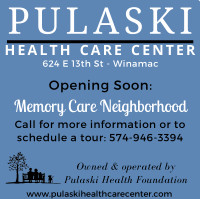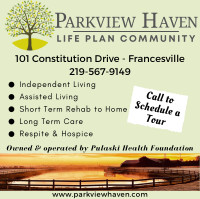The CDC COVID Data Tracker reports that nationally, COVID test positivity was 5.0 percent the week ending Oct. 26, down from 5.5 percent the previous week. Emergency room visits for COVID-diagnosed patients were 0.6 percent, the same as the week before. The percent of all deaths in the U.S. due to COVID was 1.1 percent, down from 1.3 percent the previous week.
To obtain a COVID vaccination or booster shots, or COVID test kits, consult with your healthcare provider or pharmacy. Or visit the Indiana Department of Health website page on Where to Find a COVID-19 Vaccine.
Order Your 4 Free At-Home COVID-19 Tests
It was recently announced that every U.S. household is eligible to order four free at-home tests. COVID-19 testing can help you know if you have COVID-19 so you can decide what to do next, like getting treatment to reduce your risk of severe illness and taking steps to lower your chances of spreading the virus to others. Your order of COVID tests is completely free – you won’t even pay for shipping. Orders can take at least a week to arrive. Visit COVIDTests.gov
ALSO: RSV vaccines continue to be available, and updated influenza and COVID-19 vaccines that can provide protection during the 2024–25 respiratory illness season are now widely available in autumn 2024.
NOTE: The Indiana Department of Health (IDOH) is restructuring its website to streamline access to COVID-19 data, aligning it more closely with information on other respiratory conditions such as respiratory syncytial virus (RSV) and influenza. This adjustment aims to enhance user accessibility and facilitate easier navigation for locating relevant public health data.
In 2025, IDOH will launch a pan-respiratory data dashboard that combines public health metrics such as hospital admissions, syndromic surveillance, mortality, and wastewater concentration data across three vital respiratory conditions seen in our state, including influenza, respiratory syncytial virus (RSV), and coronavirus disease 2019 (COVID-19).
What CDC knows
It's fall and winter virus season, so it's time to get your recommended immunizations, one of the core strategies in CDC's respiratory virus guidance. Layering on other strategies, like meeting outdoors or wearing a mask, may depend on virus activity in your area. To help you make informed decisions, CDC shares timely data on respiratory illnesses.
What CDC is doing
CDC collects a variety of respiratory illness data and has taken steps to clearly show trends in disease activity and illness severity. Check out CDC's updated Respiratory Illness Data Channel for the latest information on trends in flu, COVID-19, and RSV, as well as overall respiratory illnesses.
Make a plan to get your recommended vaccines
Flu, COVID-19, and respiratory syncytial virus (RSV) cause most hospitalizations due to respiratory illness during fall and winter. With fall arriving, it's time to plan to get your recommended vaccines. Staying up to date with vaccines against flu and COVID-19 (and RSV immunization, if recommended for you) protects you from severe disease, hospitalization, and death.
Recommended immunizations protect people and save lives
Last year (2023-24), CDC estimates:
Flu vaccination prevented:
- At least 7 million influenza illnesses
- 3.7 million influenza-associated medical visits
- 105,000 influenza-associated hospitalizations
- 3,500 influenza-associated deaths in the United States
COVID-19 vaccines:
- Reduced the risk of severe COVID-19 by about half.
RSV immunizations:
- Reduced the risk of RSV-associated hospitalization by 75% among adults ages 60 years and older.
- Were 90% effective against RSV-associated hospitalization in infants during their first RSV season.







